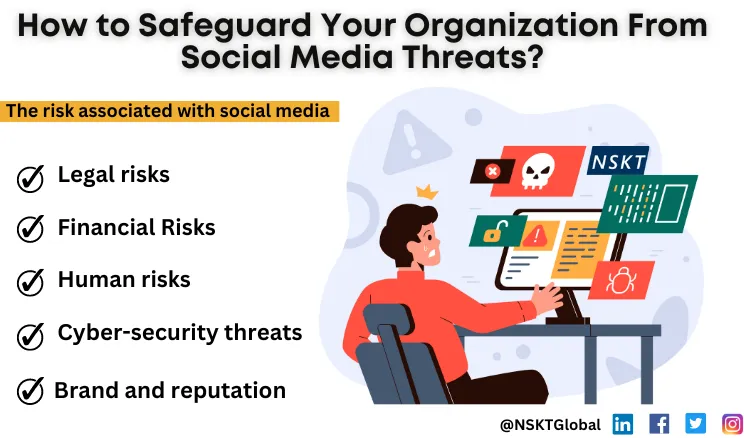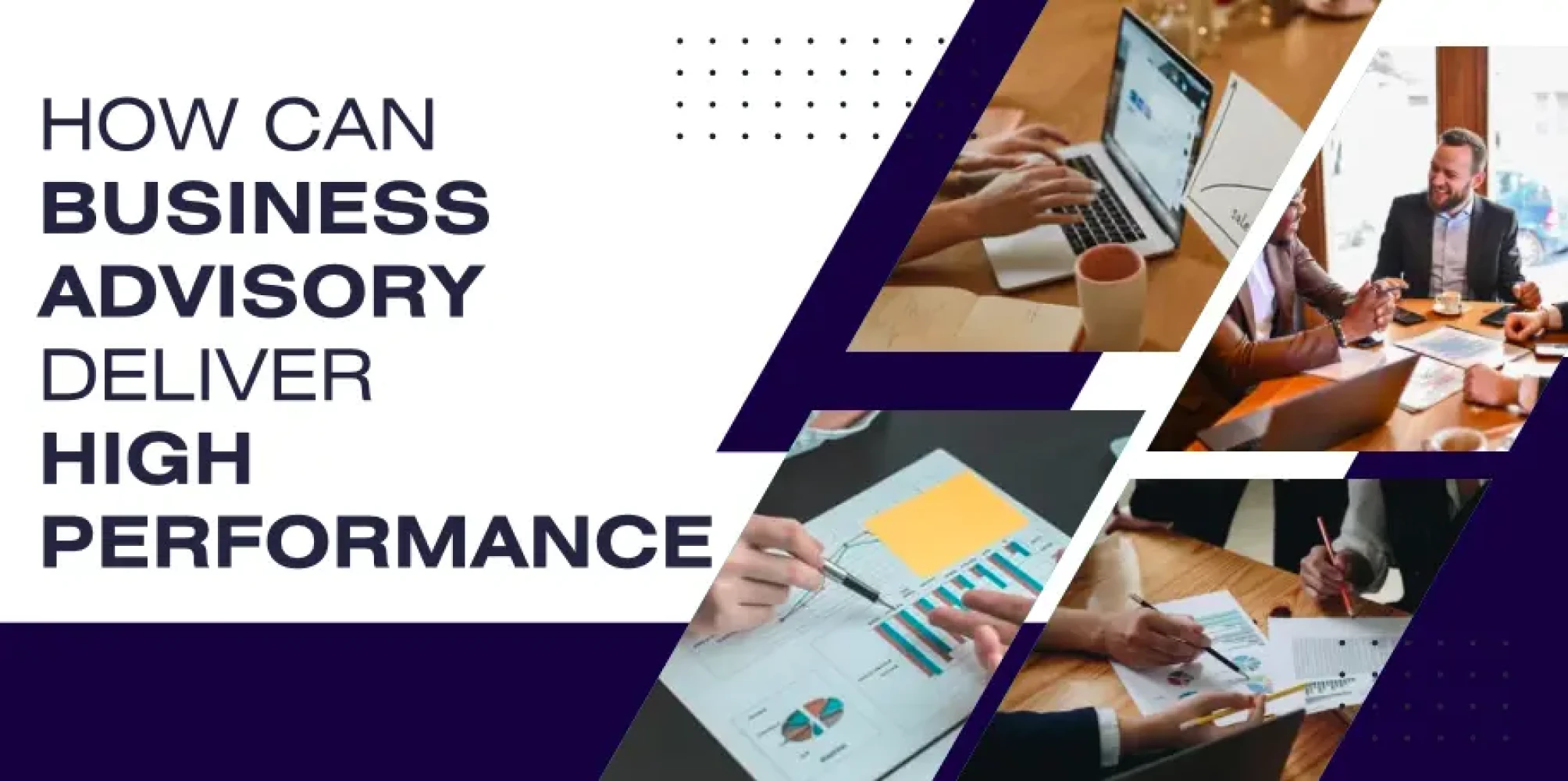Table of Contents
Social media stands as one of the most effective tools that are being used by businesses for marketing. Most modern people have access to smartphones and computers, and most are on social media. Businesses have identified Social Media as an economical and effective way of reaching a new audience base and scoring new clients. However, several threats come with social media presence, including information disclosure, social engineering, phishing, malware, and fake accounts. Social media threats must be addressed by businesses and handled accurately to avoid loss of public image and business opportunities. Social media marketing is a significant part of Digital Marketing, and Ad campaigns and word of mouth regarding the company's products allow the business to position itself in front of potential customers.
The risk associated with social media
The key risks associated with social media include Financial Risks, Regulatory compliance, Operational risks, Cyber security risks, Human, Social and political, Legal, Brand, and Reputational Risks. Let us understand the different business risks from social media and how they can be tackled accurately.
1. Financial Risks: The risk of an expensive social media program requires achieving all its objectives, which is risky. Moreover, stuff that happens over social media spreads like wildfire, which can affect the company's share price. In addition to tumbling share prices, loss of information related to the business can also lead to the loss of clients to competitors.
2. Failure to comply with regulations: Businesses must adhere to specific standards and guidelines to avoid trouble. Every company has to take them seriously to be functional without any issues. Regulators such as warnings, fines, and penalties must be considered, and not complying with suggested guidelines can lead to losses. Businesses must avoid this, as failing to comply with regulations can also lead to loss of business license.
3. Operational risks: Several operational risks affect the functioning of a company. The first risk that comes to mind is that multiple social media accounts can get hard to manage, resulting in poor-quality content and below-average supervision. Experts have also observed that the lack of cybersecurity measures and people who can take social media responsibilities on weekends is prevalent.
4. Cyber-security threats: Social media is nowadays being used by hackers and other people with malicious intent to spread malware and facilitate phishing attacks. Small businesses face the highest risk of cybersecurity threats, as reports suggest that businesses that employ less than 500 employees lose close to $2.5M every time a cyber attack occurs. Businesses with social media presence face issues like phishing attacks, Malware attacks, Ransomware, and Insider attacks, which need to be avoided at all costs.
5. Human risks: Several human risks are associated with social media and social media accounts and business influence must be supervised at all times to lower the chances of human error. There are chances of users posting inappropriate content with malicious intent to defame certain social media accounts. It has also been observed that more people are being harassed and receiving social media threats than ever. These are the human risks associated with social media.
6. Social and political risks: Suppose a group of activists is taking a stand against your company for some reason. In that case, they are presented with the opportunity to amplify their message and tarnish the image of your company. Moreover, it has been observed that social media can also enable lobbying activities.
7. Legal risks: Businesses can run into legal issues in case they use user-generated content without receiving permission to do so. Comments defaming a person or an entity can invite legal penalties and the risk of losing brand image, which must be avoided at all costs.
8. Brand and reputation: Anybody can make posts or leave comments on content related to your business over social media without interference from a third party. Negative reviews left by your customers in this form will affect your business negatively. Another cyber risk comes from better social media management from competitors, which gives them an edge over your business, even if your product/service is superior.
The impact of these risks on business:
The impact of these risks on the business can be severe, and social media threats can lead to the loss of business opportunities. Financial risks, as explained earlier, can lead to monetary losses, which leads to lower profit margins, which is not desired at all. Defamation of a company or generation of negative attention towards the same can lead to cascading share prices. If a business does not adhere to all the guidelines and regulations of social media, they risk facing penalties and income in other forms. Moreover, operational risks often lead to confusion and unclear brand positioning. When operations are not planned well, and different social media accounts follow different strategies, confusion is generated regarding the brand. One must keep in mind that supervision and planned posting strategies are to be used by companies over social media. The human risks associated with social media are real, such as the posting of inappropriate content or harassment of people over the same. These factors often lead to a bad reputation in front of customers. If complaints regarding customers being harassed by companies come forth on social media, the customers lose trust in the company, which leads to a loss of business. Moreover, activists' lawsuits and protests can hamper companies' image and business opportunities. Therefore, the impact of these issues must be considered while deploying different social media strategies and accounts for a company.
What controls can be used to plug these risks?
To manage these risks, all organizational departments must cooperate and help combat mutual vulnerabilities.
- Cross-departmental information-sharing: To do so, the company must share information across different departments and operate based on consistent policies and understandings shared by all departments.
- Definition of clear roles and accountabilities for different departments and individuals. Take, for example, the marketing department, which might be held responsible for handling risks related to the brand or reputation.
- Legal issues: At the same time, the legal department, as well as the audit department, will handle issues related to privacy, as well as fraud, respectively.
- Segregation of duties: It is also essential for businesses to define different roles for different individuals. A centralized steering group for the business might need to be more effective departments must coordinate with each other to portray coalescent statements through their social media posts and not contradict each other.
Moreover, social media threat management is not only about making technological advancements. The factor that separates an excellent social media risk manager from exceptional ones is their ability to infuse a risk-aware culture within the employees. Enabling multiple firewalls would not be enough if the employees of a firm are not risk-aware. Therefore, employees must be trained to maintain social media posting standards to keep social media threats at bay.
How can information be misused?
Miscreants can misuse the information in various ways to propagate social media risks. Cybersecurity issues can include loss of passwords, sensitive information, and other PII that can be used to blackmail money organizations. Loss of information can cause organizations to be penalized as well. It is therefore suggested that companies ensure that they meet security standards suggested by the government. Customer information can also lead to loss of business if the data ends up in the hands of competitors. Several data breaches have been shown to affect people's lives, as their photos were leaked.
A company controlling social media risks will enjoy immunity against social media threats such as losing confidential data and brand image. A good social media policy ensures that people do not post content that can risk the organization's brand image. Posting content that contradicts the brand's message can also be avoided if strict guidelines exist. However, a company lacking the same would post content without an aim, ultimately leading to brand confusion. Moreover, a company without proper guidelines would also suffer negative word of mouth, leading to a loss of business. Therefore, a company with social media guidelines will always triumph over one without them.
Social media policy
A social media policy refers to a code of conduct that should be followed by employees who post on behalf of a company. It contains guidelines that need to be followed by employees to avoid causing confusion or harm to the brand image. A social media policy aims to provide value to the company by providing strict instructions for posts, including factors such as guidelines, prohibited content, captions, and frequency of posts. For a company to benefit from its social media presence, the necessity of a policy must be addressed. Professionals at NSKT Global audit your social media practices, rules, and regulations to identify potential risks while helping businesses plug these risks as well. The social media experts working for NSKT Global also know how one can leverage the algorithm of different social media websites. Therefore, sourcing help from NSKT Global would allow you to get the most out of your social media presence. Check out the official NSKT Global website to learn how to mitigate social media threats and leverage their services in your favor!







